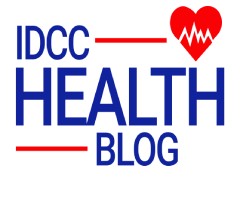What Lifestyle Changes Help Postural Orthostatic Tachycardia Syndrome?
Imagine feeling your heart race the moment you stand up — a dizzying rush that makes everyday tasks feel impossible. Many people with Postural Orthostatic Tachycardia Syndrome (POTS) face this challenge daily. But what if simple lifestyle adjustments could make a real difference? Discover what lifestyle changes help Postural Orthostatic Tachycardia Syndrome and how they can help restore balance to your body and life.
TL;DR
Lifestyle changes can greatly improve symptoms of Postural Orthostatic Tachycardia Syndrome (POTS). Staying hydrated and increasing salt intake help boost blood volume and stabilize circulation. Regular low-impact exercise strengthens the cardiovascular system, while compression garments improve blood flow and reduce dizziness. Avoiding sudden movements and prolonged standing prevents symptom flare-ups. Managing stress through relaxation techniques and maintaining healthy sleep habits further support overall stability and quality of life.
Contact a POTS specialist NYC to learn about lifestyle changes

How Can Lifestyle Changes Improve Postural Orthostatic Tachycardia?
Lifestyle changes can significantly improve POTS symptoms. Adjusting hydration, diet, and daily routines helps the body adapt to position changes and reduce dizziness or fatigue. Increasing water and salt intake, avoiding long periods of standing, and limiting caffeine are all useful measures for stabilizing blood pressure and heart rate.
Proper hydration is essential. Drinking 2 to 3 liters of water a day and increasing salt intake helps maintain blood volume and prevent episodes of tachycardia. Eating small, frequent meals—around five or six a day—keeps energy levels stable and reduces digestive symptoms. Reducing simple carbohydrates and avoiding caffeine also support overall well-being.
Progressive, adapted exercise is another key tool. Starting with low-impact activities, such as swimming or using a recumbent bike, strengthens the cardiovascular system without overexertion. Over time, the intensity and duration can gradually increase, focusing on strengthening the core and legs to promote better blood return. Other effective strategies include wearing compression garments, improving sleep quality, and avoiding excessive heat by wearing light clothing and cooling the body to prevent symptom flare-ups.
Stay Hydrated and Increase Salt Intake
The balance between water and sodium plays an important role in regulating blood flow and blood pressure. In people with POTS, this balance is often disrupted, leading to a reduced blood volume and symptoms when standing up. Increasing fluid and salt intake helps to:
- Increase blood volume: Enhances circulation and helps the body maintain stable pressure when changing positions.
- Reduce symptoms: Eases dizziness, fatigue, and palpitations while improving blood flow to the brain and other parts of the body.
Staying consistently hydrated and consuming adequate salt can make a noticeable difference in quality of life, providing an accessible way to manage daily symptoms.
Engage in Regular Physical Activity
Regular physical activity is essential for managing POTS. Exercise strengthens the cardiovascular system and improves circulation, but it must be carefully adapted to each person’s needs. In the beginning, low-impact exercises performed in a reclined or semi-reclined position are recommended to avoid symptoms related to standing.
Starting with appropriate activities is key to achieving results without worsening symptoms. Consider the following recommendations as a practical guide for building an exercise plan:
- Reclined exercises: Activities like rowing, swimming, or using a recumbent bike allow physical activity without standing.
- Frequency and duration: Begin with 3 to 4 sessions per week, lasting 25 to 30 minutes each.
- Gradual progression: As your condition improves, you can increase the intensity and duration over time.
- Resistance training: Adding leg-strengthening exercises helps improve muscle tone and blood return.
Starting slowly, listening to your body, and maintaining consistency helps increase exercise tolerance and reduce symptoms safely.
Use Compression Garments to Support Blood Flow
Wearing compression garments is an effective strategy to improve circulation and reduce symptoms of POTS. These garments—such as thigh-high stockings or pieces that compress the abdomen and thighs—help blood flow more efficiently and prevent it from pooling in the legs. They also reduce swelling and promote cardiovascular stability throughout the day.
How and when to use them:
- Wear them in the morning: Put them on after waking up, before swelling begins to build in the legs.
- Use during the day: Some people wear them all day, while others remove them at bedtime.
- Check your skin: Examine your legs daily for irritation or redness, which could indicate poor fit or skin reaction.
Consistent and proper use of compression garments helps reduce dizziness and weakness when standing.
Avoid Sudden Movements and Prolonged Standing
Avoiding sudden movements and long periods of standing helps maintain stable blood circulation and reduces dizziness, fatigue, or fainting. In POTS, the body struggles to regulate blood flow when standing, causing blood to pool in the legs and the heart to beat faster to supply oxygen to the brain.
Rapid movements or standing for too long can worsen symptoms due to poor blood distribution. The main effects to avoid include:
- Blood pooling: Gravity causes blood to collect in the legs, reducing return to the heart and brain.
- Exaggerated compensatory response: The heart beats faster to make up for reduced blood flow, leading to palpitations and discomfort.
- Increased symptoms: Extended standing or sudden movements worsen dizziness, weakness, and fatigue.
- Fainting: In more severe cases, reduced brain blood flow can cause loss of consciousness.
Avoiding abrupt movements and standing for long periods, combined with other lifestyle strategies, can greatly improve symptom control and daily comfort.
Manage Stress and Sleep Well
Incorporating relaxation practices, maintaining a consistent sleep routine, and making small lifestyle adjustments can enhance daily well-being. Consulting a healthcare provider is recommended to create a personalized plan combining these strategies with other measures like diet changes or compression therapy.
Stress Management
Managing stress helps stabilize heart rate and reduce physical discomfort. Effective techniques include:
- Relaxation methods: Meditation, yoga, or tai chi can help reduce muscle tension and promote calmness.
- Breathing exercises: Deep breathing helps balance heart rhythm and improve oxygen flow.
- Avoid triggers: Identify and minimize stress factors like excessive heat or illness.
- Seek support: Talking with a therapist or joining support groups can help manage frustration and emotional challenges.
Sleep Improvement
Quality sleep is vital for nervous system regulation and physical recovery. The following measures can promote better rest:
| Strategy | Purpose | Main Benefit |
| Regular schedule | Maintain a consistent daily routine | Helps stabilize the sleep-wake cycle |
| Elevate the head of the bed | Improve circulation and reduce morning symptoms | Makes standing up easier and less dizzying |
| Increase sleep duration | Support physical and mental recovery | Sleeping longer can help reduce accumulated fatigue |
Prioritizing self-care, relaxation techniques, and steady sleep patterns can help control symptoms and improve overall well-being.
Key Takeaways
- Increasing water and salt consumption helps expand blood volume, improve circulation, and reduce dizziness, fatigue, and palpitations. Maintaining consistent hydration offers a simple yet effective way to manage daily POTS symptoms.
- Regular physical activity, such as swimming, rowing, or using a recumbent bike, improves cardiovascular strength and blood return. Starting slowly and progressing gradually helps build tolerance without worsening symptoms.
- Wearing thigh-high stockings or abdominal compression garments supports circulation, prevents blood pooling in the legs, and reduces swelling. Proper use—especially in the morning—maximizes their effectiveness throughout the day.
- Standing still or moving abruptly can cause blood to pool in the legs and trigger symptoms like dizziness or fainting. Gradual movements and avoiding long periods upright help maintain stable blood flow and reduce strain on the heart.
- Relaxation techniques like meditation, yoga, or deep breathing help lower stress and heart rate. Maintaining a consistent sleep schedule, elevating the head of the bed, and getting adequate rest support overall recovery and reduce morning symptoms.
FAQs
How do you treat POTS in the lifestyle?
Managing POTS through lifestyle changes involves staying well-hydrated, increasing salt intake (as recommended by a doctor), and following a balanced diet with small, frequent meals. Regular low-impact exercise, wearing compression garments, avoiding prolonged standing, and managing stress and sleep quality are also key to reducing symptoms and improving daily functioning.
How to recover from a POTS episode?
During a POTS episode, it helps to lie down or elevate the legs to improve blood flow to the brain. Drinking water or an electrolyte-rich beverage can also stabilize blood pressure. Once symptoms ease, standing up slowly and avoiding heat or stress can help prevent recurrence.
What is the wellness plan for postural orthostatic tachycardia syndrome?
A wellness plan for POTS focuses on maintaining hydration, increasing sodium intake, engaging in reclined or low-impact exercises, and using compression garments to support circulation. It also includes improving sleep habits, managing stress through relaxation techniques, and avoiding triggers like heat or standing still for long periods.
Can POTS be reversed?
While POTS may not always be completely reversible, many people experience significant improvement with consistent lifestyle management. Regular exercise, proper hydration, and other daily strategies can reduce symptoms and enhance quality of life over time.
Sources
- Fedorowski, A. (2019). Postural orthostatic tachycardia syndrome: clinical presentation, aetiology and management. Journal of internal medicine, 285(4), 352-366.
https://onlinelibrary.wiley.com/doi/full
- Knoop, I., & Dunwoody, L. (2023). “You’re always fighting”: the lived experience of people with postural orthostatic tachycardia syndrome (POTS). Disability and rehabilitation, 45(10), 1629-1635.
https://www.tandfonline.com/doi/full
